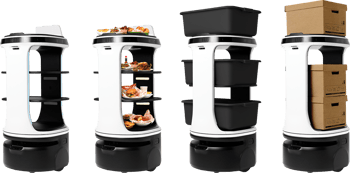After the recent birth of their son, Ed Crochet and Justine MacNeil, owners of Fiore Fine Foods, a popular, modern Italian, full-service concept, based in Philadelphia, wanted to gain back more time together and increase their quality of life. They also wanted to help create greater work-life balance for staff after noticing people “gravitating towards wanting a more normalized schedule."
Crochet and MacNeil decided to drop dinner service and rebrand as a daytime cafe, moving into a new location that cut their total seat count from 78 to 20.
Letting Life Dictate Work Changes
"Our son was born a year ago, and that put a lot of things into perspective," said Macneil. "Ed and I worked nights for our entire career, about 15 years each, and we never really had a problem with it, but with a baby – they don’t just go to your schedule, you go to theirs."
Both Crochet and MacNeil have worked the back of house, and report that they still really like working together, even though they spend so much time together. But parenthood forced them to divide and conquer, working opposite schedules.
"We want to get back to supporting each other both in and out of the home."
It wasn't just what the couple was experiencing personally, however, that dictated their change of business model.
"The other factor was that we noticed a lot more people gravitating towards wanting a more normalized schedule, and it’s difficult to get to that goal with a p.m. service," said MacNeil. "There’s been a lot of push and pull around, how do we help balance people’s lives?"
Putting a Plan in Place
Crochet and MacNeil knew that moving the restaurant would be a huge undertaking, and they were strategic about how they approached the change.
Finding the Right Location
Wanting to decrease overhead, Crochet and MacNeil decided not to renew their lease and instead search for a smaller location. The couple viewed dozens of potential real estate options before settling on a former cafe space. The new location’s major appeal largely centered around the neighborhood, offering significantly more foot traffic than Crochet and MacNeil’s former location. It was also already built-out with most of the infrastructure their new concept required.
Crochet and MacNeil have also cut costs by choosing a smaller location and making operational changes, like eliminating their reservation system and downsizing from three POS systems. The couple also planned for much more foot traffic and a bigger takeout program.
Planning a New Schedule and Menu
Crochet and MacNeil shifted their operations from dinner Wednesday through Saturday, plus Sunday brunch, to a five-day-a-week daytime schedule. The new menu targets breakfast, brunch, and lunch diners, but still include some of Crochet’s savory dinner staples, modified so that the dishes feel less formal and can travel home without losing quality. MacNeil is expanding the pastry program, and the new location has a gelato case for walk-up scoops. With a smaller in-person dining area, the goal is to make up revenue through a larger takeout program. “No matter what’s going on, whether there’s a recession or not, everyone's got to eat breakfast, and it’s not as splurgy as dinner," said MacNeil. "So that really pushed us in this direction.”
Staffing
After announcing the concept change to their staff, Crochet and MacNeil invited everyone to move with them to the new location. Given that check averages are typically lower at a daytime spot, the pair decided to raise the hourly wage for servers so that no one’s pay dropped. The couple is also debated whether to adjust menu prices or implement a service charge to account for the pay increase.
As a result, most of the current staff were excited about the opportunity to work daytime hours. A majority of the team moved to the new concept with Crochet and MacNeil – excluding bartenders. “We won’t have a liquor license, and that’s where their passion is, so we’ve tried to do our best with giving reference letters and being as communicative as possible,” MacNeil said.
Research Field Trip
Leading up to the opening, Crochet and MacNeil planned a trip to Italy for research and inspiration.
“We try to do that regularly,” said MacNeil. “We have a giant list that we’re bringing with us to help us study.”
Creating More Work-life Balance For Everyone
"For years, I thought it was crazy that people wanted to work during the day – the excitement, to me, was at night," MacNeil said. "But staffing has been tough these past few years, and it’s definitely harder to find a giant pool of people who want to stay until 2 a.m."
Alongside offering daytime hours, Crochet and MacNeil want to improve work-life balance for their staff in other ways.
“We’ve talked about offering things like four, 10-hour shifts instead of five, eight-hour shifts, and we’re making sure we’re constantly communicating with staff about what they’re interested in,” said MacNeil.
As for how the couple manages to enjoy both working and living together, MacNeil said that her best piece of advice is trying to compartmentalize work and home, without mixing the two.
"I don't always [manage it]," she said. "It’s so difficult, but the more that you can have that separation, the more you don’t have to bring as many problems home or vice versa."





